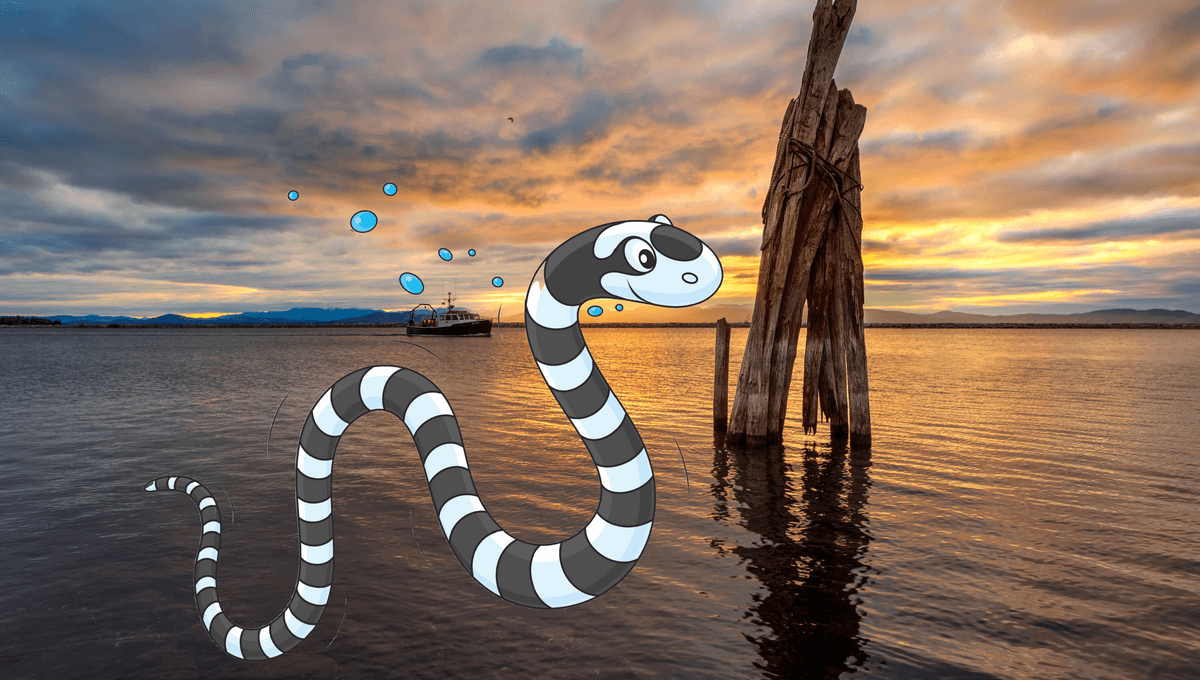
In terms of “promises that epically fail to deliver,” few things can beat the world of cryptids. Take Nessie, for example: is she, as promised, an unbelievably long-lived plesiosaur, somehow surviving alone in a single Scottish lake, only surfacing to tease the odd tourist every few years? Or is she, as is arguably more likely, some ducks?
The same goes for Bigfoot, the gigantic North American forest ape which is, sorry to say, most likely a combination of bad eyesight and deer. Sasquatch’s Eastern cousin, the Yeti, is likewise probably a bear, while Mothman is more reasonably explained by the existence of birds.
Now it’s the turn of Champ. North America’s answer to the Loch Ness Monster, this monstrous creature is supposedly the inhabitant of Lake Champlain, a body of fresh water shared by New York, Vermont, and Quebec.
It’s also the latest extraordinary beastie to be given an ordinary explanation – and this time, the answer is, well, kind of a lot of things, actually.
“Champ sightings are not nearly as consistent as claimed by some,” points out a new paper, not peer reviewed but available to the public on the bioRxiv preprint server. “A large proportion […] of sightings were described as appearing like logs, land mammals, birds, fish, and boats”.
“[This] is logical,” the author writes, “because all of these are present at Lake Champlain […] Unknown animals are therefore unnecessary to explain many sightings.”
Champ has a long and distinguished history as a cryptid: it’s been “seen” hundreds of times, with reports of enormous serpentine creatures in the lake dating back more than 200 years. But it wasn’t until the publishing of the so-called “Mansi photograph” in 1981 that public interest in Champ exploded, with the number of reported sightings more than doubling in just a decade.
But despite the hype generated by the image, the Mansi photograph was never seriously seen as proof of Champ’s existence. Multiple experts in marine biology were unable to validate the photo in any significant way – Sandra Mansi, who took the photograph in 1977, never provided a negative or a location for the image, without which authentication would be impossible. In fact, even before the photo went public, experts at the Smithsonian Institute had advised the Mansis that it was impossible to even verify whether the object in the image was even alive.
Nevertheless, Champ’s legend continued to grow, drawing tourists hoping to catch a glimpse of the serpentine beast to the area ever since. The preprint covers more than 300 individual reports, most of which are strikingly disparate in description: “Most sightings are missing data pertaining to morphological description, and those with data describe very different-looking objects,” the author writes.
In fact, pretty much the only similarity between sightings is the conditions under which they happened: most were seen on a summer evening or afternoon, under calm lake conditions, with low light conditions.
“In conclusion, if not a fake, what’s in the lake may be ordinary phenomena innocently mistaken for unknown animals, in part driven by expectant attention due to the publicity of the Mansi photograph,” the author concludes.
“Alternatively, Lake Champlain is inhabited by multi-humped, dark-colored serpents approximately seven meters [23 feet] in length, which locomote in a fast and sinuous fashion, and which prefer pleasant summer afternoons and evenings, as well as appearing before crowds,” he adds. “Deciding which explanation best accounts for the data is left as an exercise for the reader.”
The paper can be found on the preprint server bioRxiv.
Source Link: Mystery Of "Champ", America's Nessie, Might Have An Incredibly Boring Solution